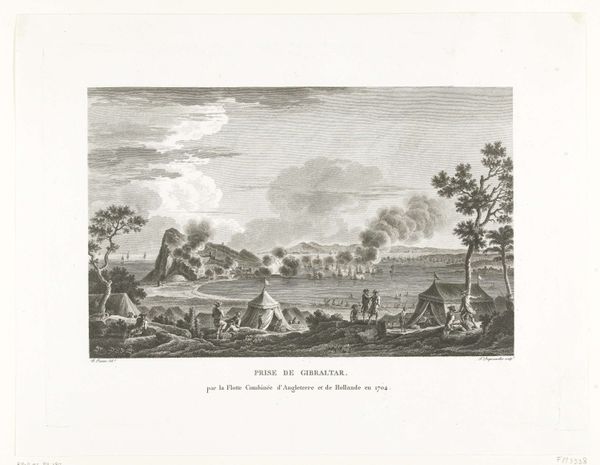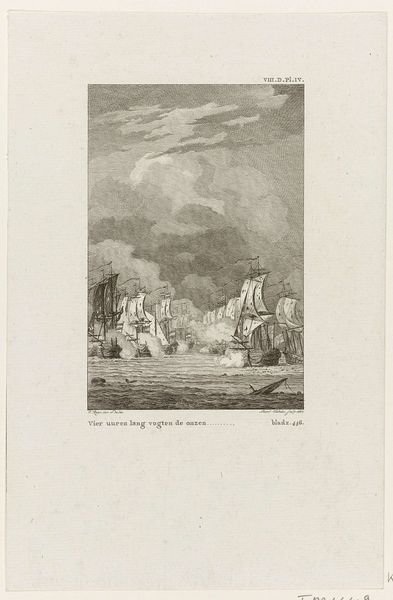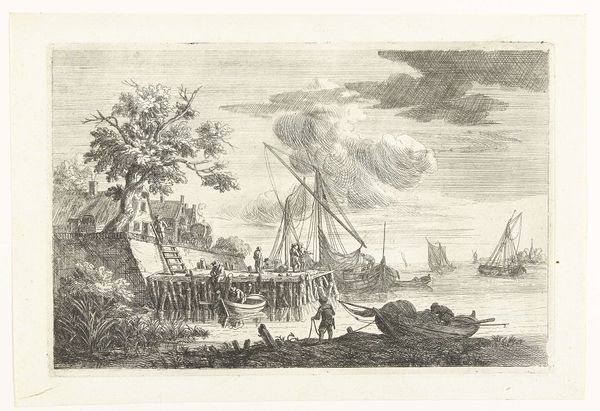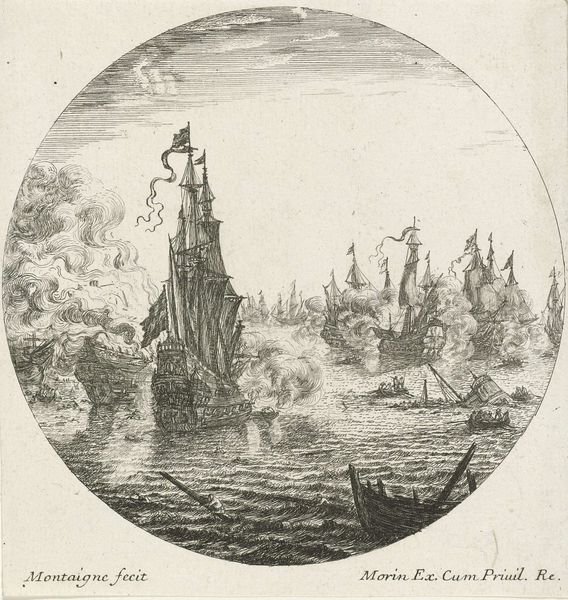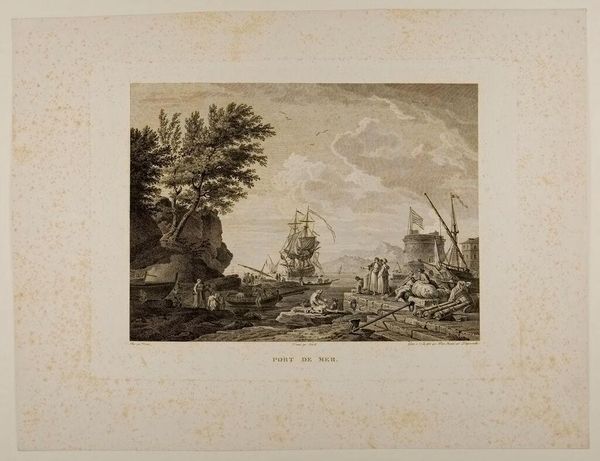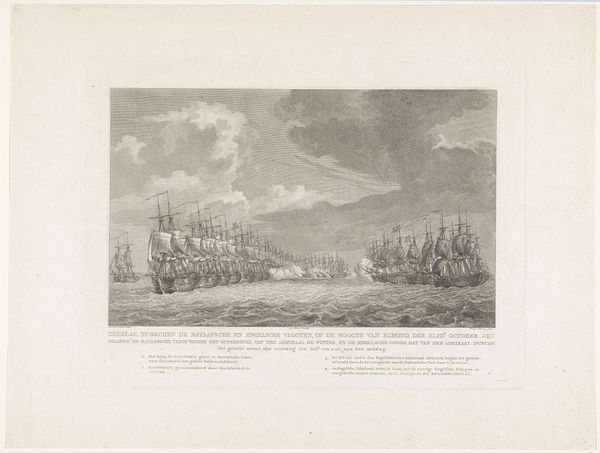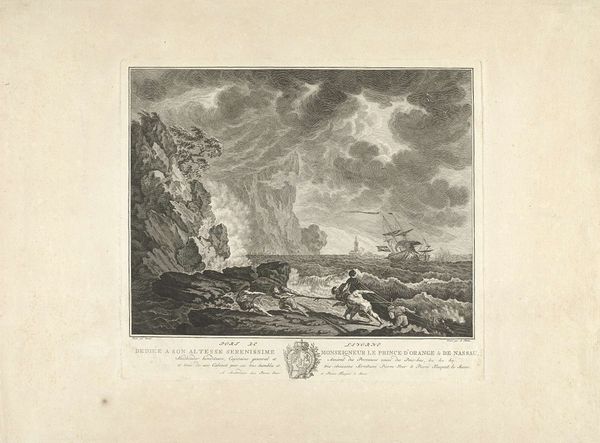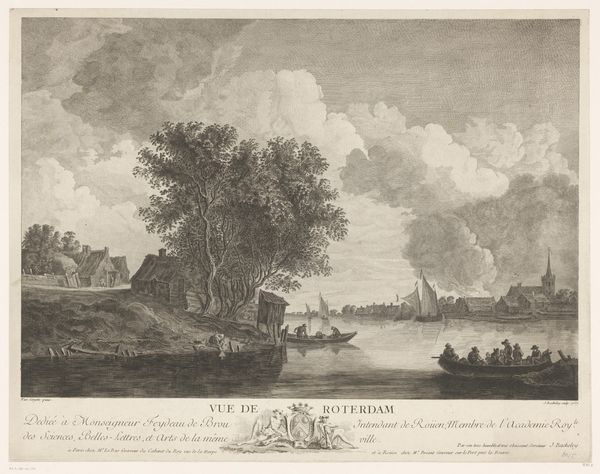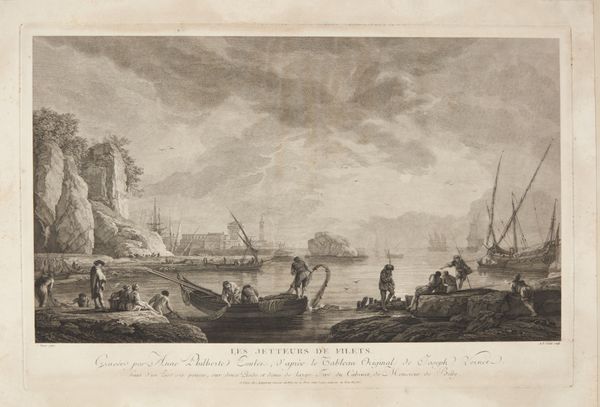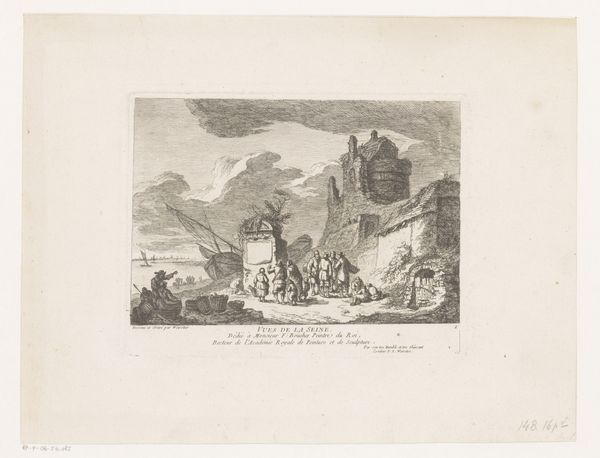
Dimensions: height 355 mm, width 418 mm
Copyright: Rijks Museum: Open Domain
Curator: This print hanging in the Rijksmuseum is entitled "Zeeslag bij Doggersbank, 1781" by Carel Frederik (I) Bendorp. It depicts a naval battle, an engraving created sometime between 1781 and 1782. Editor: Wow, it feels turbulent just looking at it! So much smoke, a whole fleet of ships… it’s like a chaotic ballet on the water. All rendered in these delicate, scratchy lines. The clouds seem ready to swallow everything whole! Curator: Exactly! This engraving captures a pivotal moment during the Fourth Anglo-Dutch War. Situated near Dogger Bank, it highlights Dutch naval efforts amidst British maritime dominance, specifically depicting the Battle of Dogger Bank on August 5, 1781. These historical prints circulated widely, shaping public perceptions of national events. Editor: So it's not just art, it’s propaganda in a way, right? To stir up patriotism… You know, looking closer, the ships have almost comical tiny flags atop each ship... Curator: Well, not necessarily "propaganda," but definitely contributing to the construction of national identity. The representation of naval combat served to bolster morale and affirm the strength and capability of the Dutch fleet and the people in fighting and winning the sea battle. Editor: It’s interesting how such violence is portrayed with such almost fussy detail, like a war diorama meticulously laid out. Look at all that rigging! The tiny people firing cannons! I wonder what it was actually like to be there, how different than this elegant version. I would think absolute horror show? Curator: It also offers commentary on naval strategies, maritime prowess, and geopolitical tensions. Considering this battle was tactically inconclusive, yet strategically significant, examining visual representations like this reveals complex interplay of national pride, colonial competition, and of course the lived experiences for those in it. Editor: Yeah… lived experiences probably weren’t as pristine and nicely arranged. Still, there is this amazing level of craft to it. Something that gets a little lost in the explosion of violence that really sells you the emotion and power of the moment. Thanks! Curator: Indeed. Reflecting on this artwork within its complex historical and social layers allows us to reconsider it beyond a snapshot and see it as a space where national identity, war, art, propaganda and political narratives converge.
Comments
No comments
Be the first to comment and join the conversation on the ultimate creative platform.
